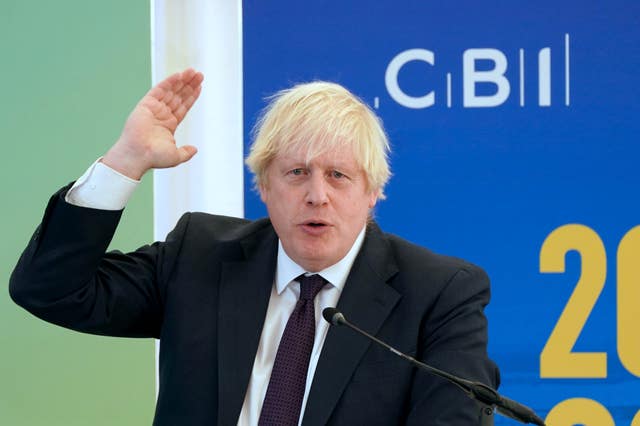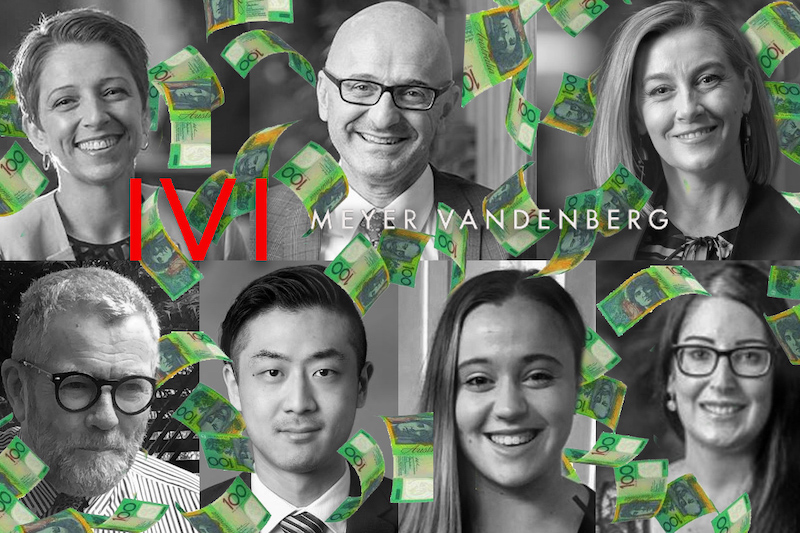This post was originally published on The Asian Age | Home.
-
The six-member rate setting panel (MPC) is meeting for three days starting Monday with the outcome being announced on Wednesday
-
The decision of the rate setting panel would be announced on Wednesday
This post was originally published on The Asian Age | Home.
-
The first roll out on a pilot basis will take place in the northern city of Lucknow first, and will be expanded to other Indian cities soon
This post was originally published on The Asian Age | Home.
-
This is a risky area and not in a complete regulatory framework. No decision was taken on banning its advertisements
This post was originally published on The Asian Age | Home.
-
The official data Tuesday also showed that the economy has surpassed the pre-Covid level
This post was originally published on The Asian Age | Home.
-
Agrawal, who was appointed to succeed Twitter founder and CEO Jack Dorsey, is 37, the same age as Meta Platform Inc. CEO Mark Zuckerberg
This post was originally published on The Asian Age | Home.
-
Former business executive Christopher Luxon has been voted the new leader of New Zealand’s opposition National Party after main rival Simon Bridges moved to support him.
It followed Judith Collins’ tumultuous exit as leader last week, after she summarily demoted Bridges last week.
Shellshocked, MPs went into a hastily called caucus the next morning and cast a vote of no confidence in her. Deputy Shane Reti became interim leader and the vote for leader was set down for today.
- READ MORE: NZ’s covid-19 update for November 30: 134 new community cases today
- Other NZ covid lockdown reports
“It is a tremendous privilege to lead our great party, and I thank my colleagues for the confidence they have placed in me,” Luxon said in a statement shortly after the vote.
Luxon, a former chief executive of Air New Zealand between 2012-2019, also said that he was pleased Nicola Willis had been chosen as his deputy.
“She will do an incredible job and we will be a formidable team.”
They face a National Party reset at a critical when New Zealand has been facing its toughest covid-19 lockdown after initially weathering the first waves of the virus last year.
Evangelical Christian
Luxon, who describes himself as an Evangelical Christian and has expressed his opposition to policies such as abortion and cannabis legalisation, said he had entered politics because he was a problem solver who “gets things done”.“I have built a career out of reversing the fortunes of under-performing companies and I’ll bring that real-world experience to this role.”
Luxon said he and Willis would be working hard to earn back New Zealanders’ trust and confidence “and deliver for them”.
He also promised that the party would be unified under their leadership.
“We are the new National Party that New Zealand needs.”
Luxon’s main rival, former leader Simon Bridges, tweeted his support for Luxon with just over an hour remaining before this afternoon’s caucus meeting where the party voted on the new leader.
“This morning I met with Chris Luxon and had a great discussion. I am withdrawing from the leadership contest and will be backing Chris. He will make a brilliant National leader and Prime Minister,” he said.
This morning I met with Chris Luxon and had a great discussion. I am withdrawing from the leadership contest and will be backing Chris. He will make a brilliant National leader and Prime Minister.
— Simon Bridges (@simonjbridges) November 30, 2021
Few words for media
“Luxon had few words for the media as he arrived at Parliament this afternoon.“Great day for the National Party, it’s really wonderful today … I’m looking forward to going to see my caucus colleagues,” he said.
Other National MPs were saying little as they arrived at Parliament throughout the morning and early afternoon.
Covid-19 Response spokesperson Chris Bishop, who had been raised as a possibility in initial speculation about the leadership, also backed Luxon.
“He’s gonna make a great leader of the National Party, he’s gonna make a great prime minister, I can’t wait to serve in his team. It’s an exciting day for New Zealand, big reset moment for the National Party.”
He said Bridges would remain in the party.
“Simon’s gonna be a critical part of the National team going forward, he’s got undoubted political skills, I’m really looking forward to serving with him, he’s gonna make a great whatever role he gets from Christopher Luxon and National just resets now.
Go forward together
“We go forward together and we’re gonna change the government in two years’ time.”Waimakariri MP Matt Doocey said it would mean a new direction for the party.
“I’m looking for a fresh start and a new vision for the party, and a new vision for the country. I’m looking forward to that, it’s exciting.”
List MP Melissa Lee said she thought Luxon was “very experienced in life”.
“He is very new but the thing is that he’s not daft. He’s a very intelligent man, I think he has led companies before and although it is actually a very different feel, that experience does speak to his life experience and I think he will make a great leader.”
This article is republished under a community partnership agreement with RNZ.
This post was originally published on Asia Pacific Report.
-
While rich countries like Australia are reaching 80% or more double vaccination rates, less than 5% of people in many low income countries have received COVID-19 vaccines. Millions are dying while new more infectious strains of the virus develop

This post was originally published on Michael West Media.
-
It was introduced in 2008 by an unidentified group of programmers as a cryptocurrency as well as an electronic payment system
This post was originally published on The Asian Age | Home.
-
We are in receipt of summons issued by the ED in connection with the Future Group, an Amazon spokesperson said
This post was originally published on The Asian Age | Home.
-
Shares of the company closed at Rs 1,781.15 apiece, down by 0.86 per cent on the BSE on Friday
This post was originally published on The Asian Age | Home.
-
The bank further said that the Central Board of Direct Taxes (CBDT) advised banks to refund charges collected on or after January 1, 2020
This post was originally published on The Asian Age | Home.
-
At present, finger prints, iris and one-time password (OTP) are used for authentication
This post was originally published on The Asian Age | Home.
-
The announcement from Vodafone Idea comes a day after Bharti Airtel announced hiking tariffs
This post was originally published on The Asian Age | Home.
-
Ambani, his wife and three children will have stakes in the new entity overseeing Reliance and be on its board, along with a few confidantes
This post was originally published on The Asian Age | Home.
-
Boris Johnson stumbled through a major speech in which he lost his place in his notes, talked about a day trip to a Peppa Pig theme park and imitated a car, before insisting: “I thought it went over well.”
Update: following 144,000 deaths he just impersonated a racecar during a big speech on Peppa Pig World https://t.co/2SZsUui3YV
— James Felton (@JimMFelton) November 22, 2021
“Is everything OK?”
The prime minister’s keynote address to business leaders saw him struggle with his papers, at one point muttering “blast it” before shuffling sheets and begging the audience to “forgive me” as he tried to find the right point to resume.
The speech to the Confederation of British Industry was an attempt to set out how pursuing green policies could help in the “moral mission” to “level up” the UK. It will likely be remembered more for Johnson’s reflections on his trip to Peppa Pig World, comparisons with Moses, a reference to Lenin, and the spectacle of a prime minister of the United Kingdom making car noises.
PM's *green growth* speech to CBI was incoherent & rambling
Stories about Peppa Pig, imitating a racing car & *Mother Nature is against wfh* – really?
Meanwhile Govt pursues obsession with endless GDP growth on finite planet & slashing of environmental regulations to get there
— Caroline Lucas (@CarolineLucas) November 22, 2021
Following the speech in South Shields, Johnson was asked: “Is everything OK?”
He told ITV:
I think that people got the vast majority of the points I wanted to make and I thought it went over well.
Labour mocked Johnson online, saying “the joke’s not funny any more”, while Liberal Democrat leader Ed Davey said:
Businesses are crying out for clarity. Instead, all they got was Boris Johnson rambling on about Peppa Pig.
It is a perfect metaphor for Johnson’s chaotic, incompetent Government as it trashes our economy, but it is not worthy of a British Prime Minister.
Boris Johnson urging everyone to go to Peppa Pig World… how long til we find out Jacob Rees Mogg has just bought shares in it or it's run by Dido Harding or something
— dave


 (@davemacladd) November 22, 2021
(@davemacladd) November 22, 2021“Daddy pig”
Johnson told the audience how he spent 21 November at Peppa Pig World in Hampshire, describing it as “very much my kind of place” but “they are a bit stereotypical about Daddy Pig”.
Don't worry @BorisJohnson…
Nobody could follow anyway. pic.twitter.com/355OhxtXPE
— The Labour Party (@UKLabour) November 22, 2021
Praising the ingenuity of the private sector, Johnson said “no Whitehall civil servant could conceivably have come up with Peppa”, which had become a £6bn global business with theme parks in the US and China. The argument has been criticised online.
Peppa Pig co-creator, writer and director Mark Baker trained at the National Film and Television School whose founding was the direct result of a recommendation from civil servants at the Department for Education and Science for the creation of a national film school for the UK. https://t.co/dED6VGSu3L
— Liam Williams (@funnylad5) November 22, 2021
Johnson’s admiration of the fictional pig trended on Twitter for a large part of the afternoon:
Has anyone noticed that while Johnson has been bigging up the creative industries (with his Peppa Pig talk) that the arts are being cut in schools and universities?
— Michael Rosen



 (@MichaelRosenYes) November 22, 2021
(@MichaelRosenYes) November 22, 2021really looking forward to the Peppa Pig episode where Daddy pig says "let the bodies pile up high" during a pandemic and then tries to get all his mates off corruption charges
— dave


 (@davemacladd) November 22, 2021
(@davemacladd) November 22, 2021I wasn’t at Peppa Pig world yesterday Boris Johnson. I was strategising about how to #ScrapNHSBill. Your dreadful Bill will harm patients
 @EveryDoctorUK
@EveryDoctorUK— Dr Julia Grace Patterson
 (@JujuliaGrace) November 22, 2021
(@JujuliaGrace) November 22, 2021Johnson also mimicked the sound of a roaring car as he said electric vehicles, while lacking the characteristic noise of a high-powered petrol engine, “move off the lights faster than a Ferrari”.
He additionally quoted Soviet leader Lenin as he said electrification will be the key to the new “green” industrial revolution:
Lenin once said the communist revolution was Soviet power plus the electrification of the whole country
The coming industrial revolution is green power plus electrification of the whole country. We are electrifying our cars, we are electrifying our rail.
The prime minister additionally compared his 10-point plan for a green economy with the 10 commandments in the Bible. It was “a new Decalogue that I produced exactly a year ago when I came down from Sinai”, he said.
Moses parted the Red Sea, @BorisJohnson just stayed at a friend's villa there! Suspect the CBI would have learnt considerably more from Peppa Pig. https://t.co/s132MoQrE6
— David Lammy (@DavidLammy) November 22, 2021

Prime minister Boris Johnson covering an unexpectedly broad range of topics during the CBI annual conference (Owen Humphreys/PA) Back-tracking
Johnson defended his levelling-up agenda following criticism of scaled-back plans for new railways in the North and Midlands. Ministers announced last week that the eastern leg of HS2 between the Midlands and Leeds would be cut, while a promised Northern Powerhouse Rail link between Leeds and Manchester would run partly on existing tracks.
Tony Danker, director-general of the CBI, said the decision had “upset” businesses in the north of England. Johnson defended the rail proposals, describing the Integrated Rail Plan (IRP) as “transformatory”. He also argued that achieving his goal of addressing imbalances in the UK would help it become a bigger economy than Germany, saying:
It’s a moral thing but it’s also an economic imperative.
The prime minister said there would still be “massive gains” by a mixture of investing in new lines and upgrading existing track. He told the conference:
I must say that I thought, as a lesson in what happens when you tell the British people we’re investing £96 billion in the biggest railway programme for 100 years, some of the coverage was missing the point, let me put it that way.
So, Birmingham to Newcastle is 40 minutes quicker under the IRP; from Newcastle to London will have 20 minutes shaved off because of the upgrades to the East Coast Mainline.
You are mad as a railway enthusiast, which I am, to think that you always have to dig huge new trenches through virgin countryside and villages and housing estates in order to do high-speed rail.
He added that chancellor Rishi Sunak wanted to cut the tax burden for businesses but the government had to be “prudent” following £407bn of pandemic spending that had been “extremely tough for the taxpayer”. The PM also announced in his speech that new laws will see new homes, supermarkets and workplaces compelled to install electric car charging points.
The announcement on charging points is another step towards the banning of the sale of petrol and diesel cars in the UK by 2030.
Pig World
James Mancey, operations director at Paultons Park, where Peppa Pig World is based, said the attraction was “delighted” Johnson attended on 21 November. He said:
The fact that Mr Johnson has chosen to speak at length about his visit during today’s CBI conference, positively endorsing the creativity and innovation showcased by Peppa Pig World and encouraging others to visit, is testament to the hard work of everyone at Paultons Park who create the wonderful experience our millions of guests enjoy each year.
Others suggested the shambolic speech may have been an attempt to draw attention away from the multiple scandals the PM has embroiled himself in:
Every time I switch on the TV expecting to hear the outcry at the Prime Minister having lied to the electorate about his social care plan all I hear is people talking about Peppa pig. I’m sure this wasn’t intentional..
— Peter Stefanovic (@PeterStefanovi2) November 22, 2021
It would be awful if everyone started talking about Peppa Pig instead our corruption, our plans to privatise the NHS or our bill to make the poorest people pay for the social care of the rich. #ScrapNHSBill pic.twitter.com/GIsd7tAybv
— Parody Boris Johnson (@BorisJohnson_MP) November 22, 2021
By The Canary
This post was originally published on The Canary.
-
On Thursday, the rupee had closed at 74.30 against the US dollar
This post was originally published on The Asian Age | Home.
-
The entry-level tariffed voice plan has been hiked by about 25 per cent
This post was originally published on The Asian Age | Home.
-
Inspired by the Arab Spring, Manal al-Sharif used social media to start and lead movements. In the second of two articles, the Saudi-born cybersecurity expert and human rights activist examines how her home country uses social media to crush dissent. She explains how digital rights and human rights are inextricably intertwined, and how the absence of the former is the death knell of the latter.

This post was originally published on Michael West Media.
-
Multinational prison contractors reap billion-dollar government contracts with soaring profits throughout the pandemic while inmates and their loved ones languish through uncertainty, lockdowns and COVID-19 outbreaks. An investigation by Stephanie Tran into Australia’s privatised prisons.

This post was originally published on Michael West Media.
-
Mercedes-Benz on Friday launched its performance-oriented compact car AMG A 45 S 4MATIC+ priced at Rs 79.50 lakh at pan-India showroom
This post was originally published on The Asian Age | Home.
-
Rice exports rose an impressive 10.5 per cent between April and October over the record exports in FY21
This post was originally published on The Asian Age | Home.
-
With a small army of lawyers having already gouged hundreds of thousands of dollars in fees, Canberra law firm Meyer Vandenberg continues to stand over independent media with defamation threats, writes Michael West.

This post was originally published on Michael West Media.
-
Immediately after the launch, the shares of Paytm traded in the red zone and fell over 20 per cent within minutes of trading
This post was originally published on The Asian Age | Home.
-
PNG Power Limited — faced with a business on the brink of total collapse due to ageing infrastructure — is losing K25 million (NZ$10 million) a month in revenue, and is on top of a staggering K650 million (NZ$265 million) debt owed to service providers.
The monthly loss in revenue is through power theft, tampering with meters and frequent outages that have forced many companies — large and small– to run their own electricity generation units, adding K20 million (NZ$8.2 million) to the losses incurred by PNG Power Limited.
Information provided to the PNG Post-Courier has painted a grim picture about the state-owned entity, PNG’s main electricity provider.
According to people close to PNG Power, the SOE requires more than K1 billion to bail itself out of the current mess and deliver reliable power to the country.
However, how it raises this money is a contentious issue yet to be addressed by government and the PNG Power management.
Melisha Yafoi reports that PNG Power currently owes service providers and Independent Power Producers debts totalling K650 million.
The debts are now believed to be at an unsustainable level unless monthly losses of around K25 million, grid reliability and revenue collection are all addressed immediately.
In addition, concessional loans have been given to PNG Power by the ADB, World Bank and JICA worth more than K400 million, tipping the debt to more than K1 billion.
A well-placed industry source told the Post-Courier on Monday that the state entity had serious cashflow issues that need to be solved immediately.
Public demand explanation
Student journalists Yesmah Nouairi and Abbra Ntum report that the public have demanded an explanation from PNG Power about why there are frequent blackouts in the nation’s capital and other regions.Customers, responding to PPL’s notices on Facebook advising of power outages last week and recently, have also expressed frustration about the frequent blackouts.
“We have been experiencing low power voltage and power outage since last week Tuesday,” said a customer from Boera village in Central Province.
They also expressed their frustrations about the power company not sticking to its advertised outage schedules.
PPL advised its consumers on its Facebook page that it would carry out power interruptions to allow workmen to do urgent maintenance work.
They said the areas that would be affected were Waigani, Gerehu stages five, six and parts of stage two.
However, residents from Morata Two, Two Mile, Boera and Gerehu Stage One and Stage Three have also been experiencing constant power outages.
“Power has been coming on and going off since 11pm last night, and it just went off now, is this part of the so called maintainance work that the company is doing?” said a resident from Gerehu Stage Four.
Line clearance damage
Others complained about the line clearance and the damages it may cause to electrical appliances in their houses that can cause fire or injury.“Gerehu Stage One, Udia Street power pole 9657 seriously needs line clearance,” commented a frustrated consumer of PNG Power Facebook page.
“The powerline from the pole to the house is fluctuating and there is not enough power current in the house and this has caused damage to so much of the electrical appliances.”
Many people said it was expensive to replace or buy new electrical appliances every time there was a power outage in the city as most households use electric stoves and pans for cooking.
PNG Post-Courier articles are republished with permission.

PNG Power Limited’s head office … massive debts reported. Image: PNG Report This post was originally published on Asia Pacific Report.
-
Prime Minister Narendra Modi said Friday the new scheme ‘allows the smallest investor to participate in the country’s economic progress’
This post was originally published on The Asian Age | Home.
-
Human Rights Watch says it only received one reply after writing to 13 companies involved in Beijing Games
Corporate sponsors of the Beijing 2022 Winter Olympics have been accused of “squandering the opportunity” to pressure China to address its “appalling human rights record”.
The Games’ top level sponsors, including Coca-Cola, Airbnb, Procter & Gamble, Intel and Visa, were on Friday accused of ignoring China’s alleged “crimes against humanity against Uyghurs” and other Turkic Muslims in Xinjiang as well the repression of free speech in Hong Kong.
Continue reading…This post was originally published on Human rights | The Guardian.
-
UK government watchdog finds lack of due diligence over human rights in occupied territories
JCB, the British tractor firm, has been found by a UK government watchdog to have failed to carry out due diligence human rights checks over the potential use of its equipment to demolish homes in the occupied Palestinian territories (OPT).
The watchdog ruled: “It is unfortunate that JCB, which is a leading British manufacturer of world-class products, did not take any steps to conduct human rights due diligence of any kind despite being aware of alleged adverse human rights impacts and that its products are potentially contributing to those impacts.”
Continue reading…This post was originally published on Human rights | The Guardian.
-
Earlier today, PM Modi launched two innovative customer-centric initiatives of the Reserve Bank of India
This post was originally published on The Asian Age | Home.
-
The shares of Paytm are expected to list on bourses on November 18
This post was originally published on The Asian Age | Home.